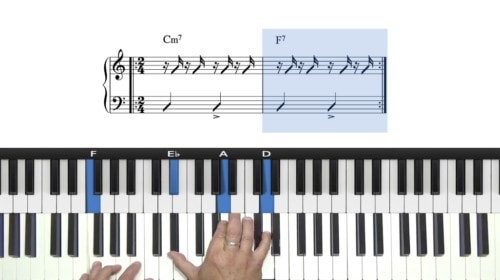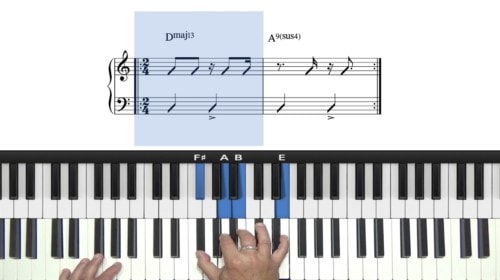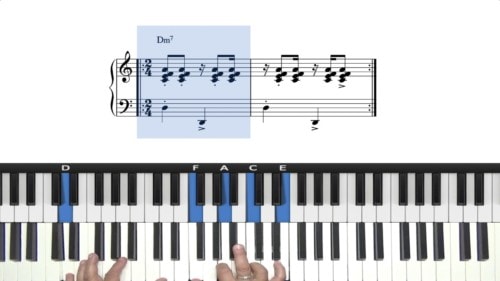Rhumba & Habanera Grooves
In this lesson we explore Caribbean rhythms and their influence on New Orleans piano styles.
The Rhumba and Habanera grooves are an important element of the rhythmic toolbox of New Orleans Piano to make the music funky.
The Rhumba – Professor Longhair
The Rhumba is often associated with Professor Longhair. The Rhumba left hand pattern creates a broken rhythm that works for dancers. We offset the left hand pattern with our right hand by playing in the gaps.
In a New Orleans context, the Rhumba and the Habanera are very closely linked.
The Habanera – Cuban Rhythms
The Habanera used the same rhythmic pattern as the Rhumba. The Habanera is a style of music that came from Havana and became popular in the late 1800s and is still played in Cuba to this day.
Habanera has a distinctive rhythmic feel which Jelly Roll Morton called the ‘Spanish tinge’. The phrase ‘Spanish tinge’ is a reference to the Afro-Latin rhythmic touch that spices up the more conventional 4/4 rhythms commonly used in jazz and pop music.
Lesson Downloads
-
Rhumba Bass Line & Rhythms File Type: pdf
-
Habanera Bass Lines & Rhythm File Type: pdf
-
Bass Line Comparison File Type: pdf
Practice Tips
-
The slur in the left hand of a Rhumba pattern is important. It can be played as a short slur or as a longer slur.
-
We can strengthen our left hand Rhumba patterns by playing the bass lines in octaves.
-
When playing these styles try to think of your 2 hands in the same way a drummer would when holding drum sticks.
-
When we create hole in our left hand pattern, we can use our right hand to fill the hole so both hands are working in concert.
-
By playing octave in our left hand we can accentuate and emphasise one note or alternatively we can break it up to created a fragmented bass line.








Hi – me again!
Thanks so much for this course!
I’m totally loving these lessons, and wanted to just include a couple songs that I’ve written that I think have these rhythms in them – I’m really excited to learn more about these rhythms and put them into the context of future songs!
The first tune is Candles, and I think that bassline is like the Rhumba.
The second is Equestrienne, and I think that bassline is like the Habanera.
And it’s the other way around – Candles is like the Rhumba, and Equestrienne is like the Habanera…
ok can I delete or edit comments? I can’t see a way to do that? But here I am making mistakes all over the place!
Thanks!
M
Awesome, thanks for sharing these songs Megan. These kind of comments enrich the lesson pages for other students so it’s wonderful to see 😊
I’m very glad to hear you are enjoying the course… we put a tonne of work into the editing and transcriptions so it’s really great to hear your feedback.
Regarding comment editing:
Yes it should be possible to both edit and delete your comments. We recently updated the comment system and so there may be an issue with editing comments. I can see the “edit” and “delete” buttons on my side, but I am the site administrator and so it’s possible that these options are not showing for student accounts. I am investigating and have forwarded it to our tech team to investigate further.
Cheers,
Hayden
Hi Hayden,
All I see on my side is the option to reply – I can’t see an option to edit or delete here on my desktop. If it’s any different on my phone I’ll let you know.
I’m amazed that you have transcribed these – I sort of pictured special piano that did it for you haha!
Hello. For the ‘right hand playing in the gaps’ part of the rhumba, what would you recommend as a good voicing if I moved onto a G chord in the right hand?